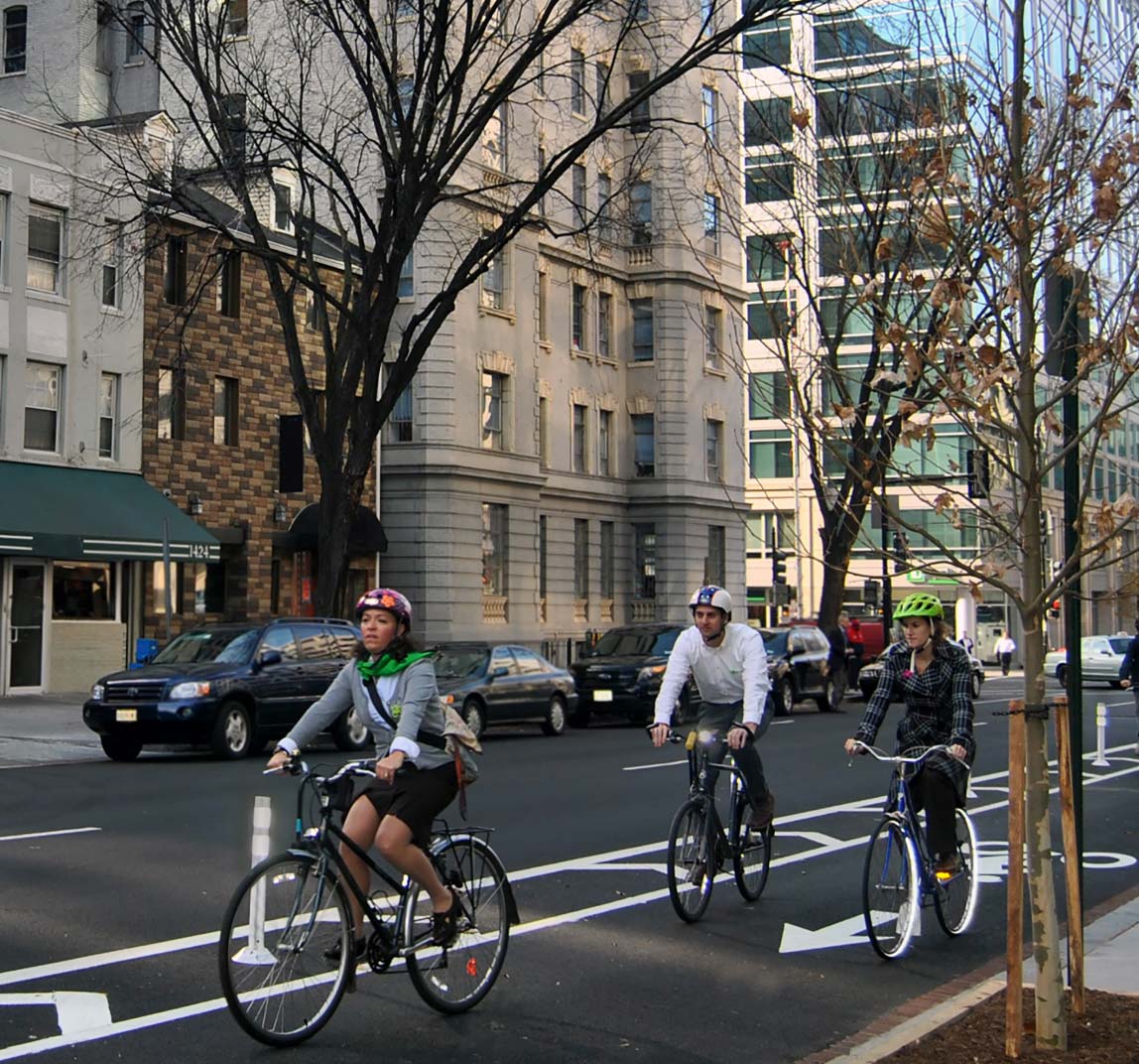 U.S. Department of Transportation
U.S. Department of Transportation
Federal Highway Administration
FHWA-SA-21-051
Most fatal and serious injury bicyclist crashes occur at non-intersection locations. Nearly one-third of these crashes occur when motorists are overtaking bicyclists1; because the speed and size differential between vehicles and bicycles can lead to severe injury. Many people are not comfortable riding a bicycle because of their fear that this type of crash may occur. To make bicycling safer and more comfortable for most types of bicyclists, State and local agencies should consider installing bicycle lanes. Providing bicycle facilities can mitigate or prevent interactions, conflicts, and crashes between bicyclists and motor vehicles, and create a network of safer roadways for bicycling. Bicycle Lanes align with the Safe System Approach principle of recognizing human vulnerability—where separating users in space can enhance safety for all road users.
Applications
FHWA’s Bikeway Selection Guide and Incorporating On-Road Bicycle Networks into Resurfacing Projects assist agencies in determining which facilities provide the most benefit in various contexts. Bicycle lanes can be included on new roadways or created on existing roads by reallocating space in the right-of-way through Road Diets. Separated bicycle lanes, which use vertical elements—such as flexible delineator posts, curbs, or vegetation—between the bicycle lane and motorized traffic lanes provide additional safety benefits.2,3 For a marked bike lane without vertical elements, a lateral offset with marked buffer can help to further separate bicyclists from vehicle traffic.
Considerations
- In order to maximize a roadway’s suitability for riders of all ages and abilities, bicycle lane design should vary according to roadway characteristics (number of lanes, motor vehicle and truck volumes, speed, presence of transit), user needs (current and forecasted ridership, types of bicycles and micromobility devices in use within the community, role within the bicycling network), and land-use context (adjacent land uses, types and intensity of conflicting uses, demands from other users for curbside access). Separated bicycle lanes are recommended on roadways with higher vehicle volumes and speeds, such as arterials.
- City and State policies may require minimum bicycle lane widths, although desirable bicycle lane widths can differ by agency and functional classification of the road, current and forecasted bicycle volumes, and contextual attributes such as topography. Studies have found that roadways did not experience an increase in crashes or congestion when travel lane widths were decreased to add a bicycle lane.4
- Studies and experience in U.S. cities show that bicycle lanes increase ridership and may help jurisdictions better manage roadway capacity.
- In rural areas, rumble strips can negatively impact bicyclists’ ability to ride if not properly installed. Agencies should consider the dimensions, placement, and offset of rumble strips when adding a bicycle lane.5
- Bicycle lanes should be considered on roadways where adjacent land use suggests that trips could be served by varied modes, particularly to meet the safety and travel needs of low-income populations likely to use bicycles to reach essential destinations.
Sources
1. Thomas et al. Bicyclist Crash Types on National, State, and Local Levels: A New Look. Transportation Research Record 673(6), 664-676, (2019).
2. Separated Bike Lane Planning and Design Guide. FHWA-HEP-15-025, (2015).
3. (CMF ID: 11296) Developing CMFs for Separated Bicycle Lanes. FHWA-HRT-23-025, (2023).
4. Park and Abdel-Aty. ”Evaluation of safety effectiveness of multiple cross sectional features on urban arterials“. Accident Analysis and Prevention, Vol. 92, pp. 245-255, (2016).
5. FHWA Tech Advisory Shoulder and Edge Line Rumble Strips, (2011).
6. (CMF ID: 10738, 10742) Development of Crash Modification Factors for Bicycle Lane Additions While Reducing Lane and Shoulder Widths. FHWA-HRT-21-012, (2021).

